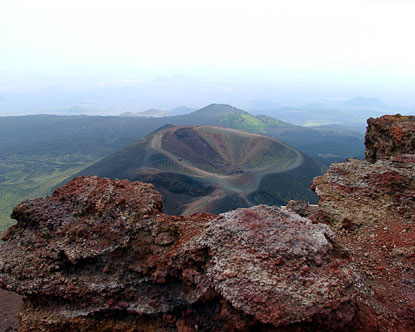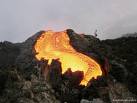



Mt. Etna




Standing at almost 11,000 feet, Mount Etna dominates the Sicilian skyline, a vague threat situated near the island's eastern coast. This is the most active volcano in the world. The ancient Greeks believed it to be the home of Vulcan, the god of fire - to them, Mount Etna erupting merely meant Vulcan was forging weapons for Mars, the god of war. Dating back to 1500 BC, the volcano has erupted around 200 times, and the 21st century has seen Mount Etna erupting yet again - and again. In 2001, lava flows reached within mere miles of the nearby town of Nicolosi. The 2002-2003 eruption was one of the most explosive flank eruptions in the past 150 years at Mt. Etna. The magma mixed with groundwater and was phreatomagmatic. Ash fell as far away as the Greek island of Cefalonia. An effusive eruption started on September 7, 2004 on the West wall of the Valle del Bove and didn't end until March 2005. On July 14, 2006 at 11:30 pm, a fissure opened on the East flank of the Southeast Crater. Two vents along the fissure produced a lava flow which spread nearly 2 miles East to the Valle del Bove. The eruption lasted 10 days. A paroxysmal eruption began at the southeast crater on May 10, 2008. This was followed on May 13 by two fissures opening between 8,700 and 10,000 ft. elevation on Etna’s upper east side. The fissures sent lava flows more than 3 miles into the Valle del Bove.
But regardless of the history of Mount Etna, the people that live within the volcano's destructive reach seem completely unfazed. We spent a couple of hours climbing Mt. Etna. The highest elevation that we were allowed to reach was approximately 7,000 ft. Our photos are shown below (note the need for warmer clothes as we ascended the mountain).
(click on the images below to view a larger photo)[photogallery/photo24464/real.htm]